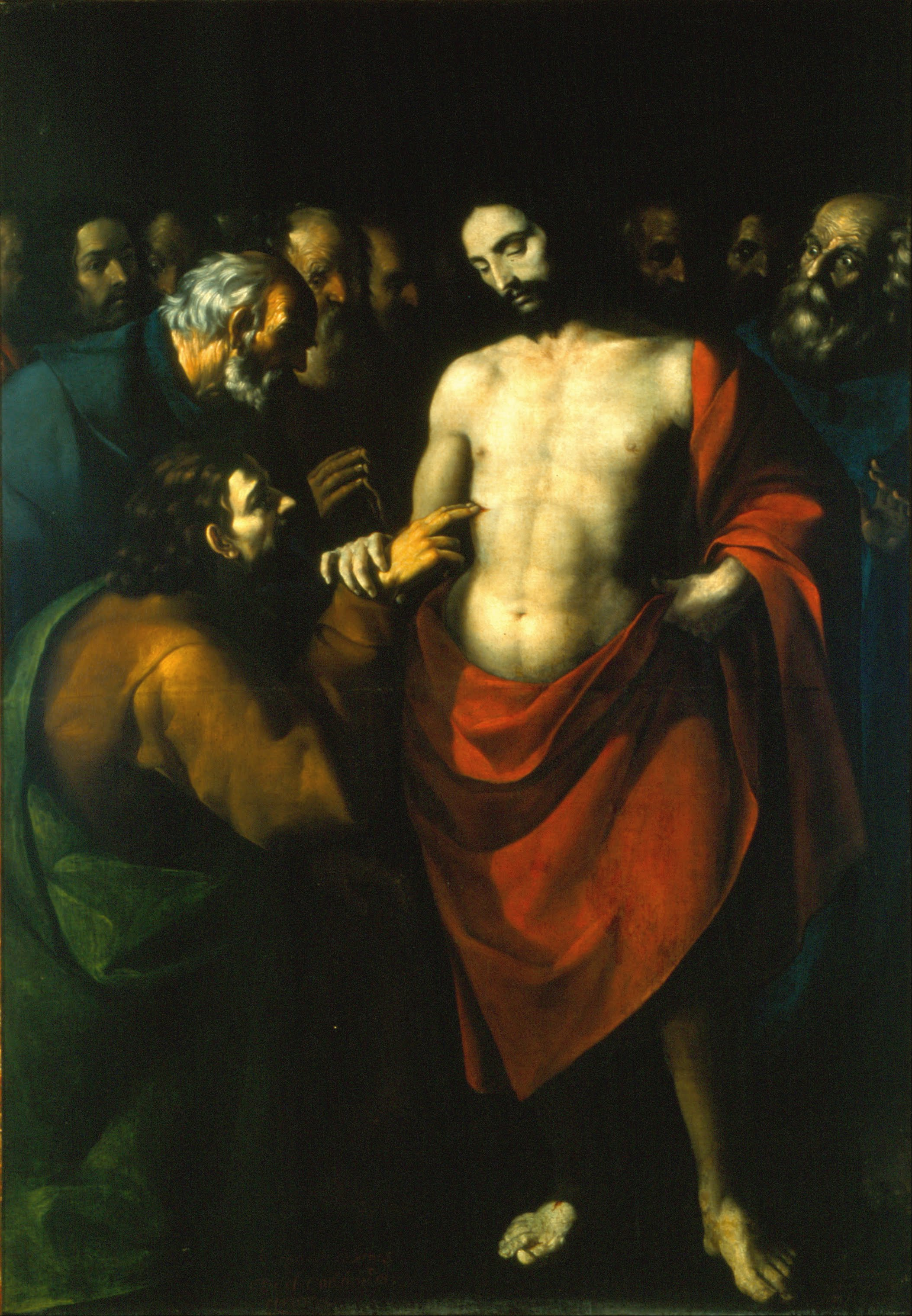From the beginning Our Blessed Lord has been found only by two classes; those who know and those who do not know— but never by those who think they know. – Archbishop Fulton J. Sheen
When Thomas was shown the wounds of Christ, he believed. He is popularly called Doubting Thomas because he refused to accept the first pope’s word that Christ had risen. Doubting what he was told, he insisted on being “shown the holes in his hands where the nails were driven, and the hole in his side where the lance had pierced.”
Of course, there were good reasons not to believe the first pope, a man who had denied Our Lord three times in public, going so far as to swear that he did not know who Jesus was. While not denying Peter’s authority, Thomas did doubt his credibility. Thomas insisted on seeing Christ’s body.
It is kind of hard on the memory of Thomas that he is singled out in this way, for when Mary Magdalene told the rest of the apostles that she had seen the risen Lord, they did not believe her. When Our Lord finally did appear to these eleven apostles, He chastised them for their unbelief (Mark 16:14). Thomas was just acting in the same careful, skeptical manner as the others were, including the pope himself. But neither Thomas nor the apostles were professional skeptics. They were just very cautious thinkers, careful men who needed to be shown evidence that Christ was alive.
This gospel account tells us about the nature of conversion. We might try and tell people about what we see, but often their conversion can only be brought about by Christ coming and revealing Himself to them. He does this in many ways, and everyone reading this can think about how this has happened in his or her own life. Christ’s body can be seen by any who will take the trouble to go to church and look up at the Elevation. We might not be able to put our fingers into the nail holes, but we certainly see Christ on the altar. Some people think that if only Christ was visible again in the flesh, people would convert. Not so. He tried that 2000 years ago and the response at the time was mixed, muted even, among some people. Many of the common people tended to accept Christ, but often the intellectuals and rulers of the time preferred to argue around the issue with questions such as “What is truth?” and “Is it not better that one should die for the people?” and “Tell me, are you a king?”
Such atheism comes from people being too clever by half, the kind of men who never have to face the real world. I personally think there is a link between men and women having calloused hands and their being Christians—the experience of reality leads to belief.
These professional skeptics are still with us. What do they have to offer us instead of our Faith? Nothing. They would rob us of our religion by their skepticism only to replace it with the prospect of a life wrecked by selfishness—the Selfish Gene. They still ask foolish questions such as “What is marriage?” and “Is it not better that a child’s innocence should die for the good of the school board?” and “Tell me, do you like our flag?”
The first Vatican Council defined as Catholic Doctrine that, unaided by grace, man can reason to the knowledge that God exists. Man can, but it appears that some men cannot. In fact, some modern philosophers cannot reason at all. I once built a house for a philosopher whose specialty was Hegel. I got a worried phone call: all his windows were broken or painted shut, and he could not open any of them. At his house, I showed him with as much gravitas as I could manage how to unhook the latch and open the windows.
That some glory boy media hounds cannot reason to God is their problem, not ours. Normal men and women can, even children can, and do quite successfully. In my opinion, that is why Christ came to Bethlehem and revealed Himself to the shepherds. It was partly to humble the wise, or rather those who often claim to be wise and who are actually very stupid.
But I do not need to fall back on reason alone, for I see Christ on the altar each time I go to Mass.
By Sebastián López de Arteaga (1610 – 1652) (Spanish) (Painter, Details of artist on Google Art Project) [Public domain or Public domain], via Wikimedia Commons.











